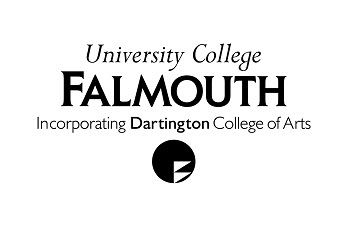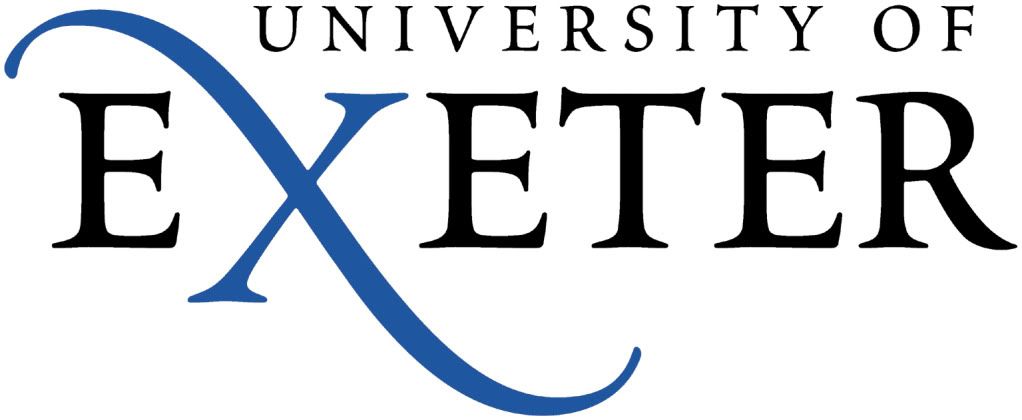Last week Sarah and I attended a lecture given by Kym Martindale, senior lecturer in Creative Writing here at University College Falmouth. The talk began with an explanation of the library Dewey system, which differs vastly from the tree structure we use when arranging archives. An interesting point was that, technically, you could give any scene a Dewey number. For example, a tractor in a field you could say was agricultural, european, of the 21st century, and possibly more to come up with a Dewey number.
The crux of the lecture, however, was how an archive makes you feel: why are people so drawn to the archive? In some ways, rifling through an archive is a way of getting into the life and mind of someone you might admire or are researching. Currently on display at the Emory University are the Salman Rushdie archives. This contains traditional archival material such as journals, notebooks, photographs and other manuscripts, but there was also the dilemma of what to do with the vast quantity of Rushdie's born-digital records. Common options for dealing with such data can be to either preserve the physical objects: computers, floppy disks, DVDs etc, or to transfer the data to more modern systems and making sure these are kept up to date. At the Rushdie archive they have come up with an innovative way of displaying the born-digital material by giving users access to Rushdie's computer using an emulator and, in effect, simulating the author's electronic universe, thus providing an archive that is both interactive and digitally preserved. A video demonstration can be seen here.
Users are faced with a facsimile of Rushdie's computer screen from one of his early Mac computers and can navigate through his files and folders and even launch apps. No doubt this is a fascinating experience and you can totally emerse yourself in Rushdie's way of working. This simulator not only provides the information, but also gives the information an aura - an archive experience on a higher, almost spiritual, level. However, an important point was raised by an audience member during the lecture: surely the information on the computer was in some way vetted by Rushdie himself before being made public. Therefore the idea that this simulator shows his computer just as he would have used it is a false one. This made me think about archives in general: we tend to think of them as absolute truth; they are as primary as a primary source can get. But in actual fact, an archive is really only a selection. If someone uses an archive to gain a sense of someone or something, i.e. its 'aura', rather than the straightforward, non-subjective facts and evidence that it might provide, is this aura or sense in some way false?
On the other hand, you might be able to find out more about a person by using their archive. Kym spoke about the archive of poet Frnaces Bellerby, which is held at the University of Exeter. After going through the archive, Kym was suprised to see several notebooks about Bellerby's pet tortoises. These notes were so extensive, yet no mention of these tortoises had ever made it into her poetry! They were obviously a significant part of her life, yet anyone reading only her published work would never know this aspect of her life. This is an example of how using an archive can give a further dimension to the person you are researching, making them seem that little bit more real and less remote.
In any case, the idea of an archive having an 'aura' is an interesting one, and I don't think anyone who has used an archive or works in one can deny that there is a sense of satisfaction and significance in working with this original material.
The crux of the lecture, however, was how an archive makes you feel: why are people so drawn to the archive? In some ways, rifling through an archive is a way of getting into the life and mind of someone you might admire or are researching. Currently on display at the Emory University are the Salman Rushdie archives. This contains traditional archival material such as journals, notebooks, photographs and other manuscripts, but there was also the dilemma of what to do with the vast quantity of Rushdie's born-digital records. Common options for dealing with such data can be to either preserve the physical objects: computers, floppy disks, DVDs etc, or to transfer the data to more modern systems and making sure these are kept up to date. At the Rushdie archive they have come up with an innovative way of displaying the born-digital material by giving users access to Rushdie's computer using an emulator and, in effect, simulating the author's electronic universe, thus providing an archive that is both interactive and digitally preserved. A video demonstration can be seen here.
Users are faced with a facsimile of Rushdie's computer screen from one of his early Mac computers and can navigate through his files and folders and even launch apps. No doubt this is a fascinating experience and you can totally emerse yourself in Rushdie's way of working. This simulator not only provides the information, but also gives the information an aura - an archive experience on a higher, almost spiritual, level. However, an important point was raised by an audience member during the lecture: surely the information on the computer was in some way vetted by Rushdie himself before being made public. Therefore the idea that this simulator shows his computer just as he would have used it is a false one. This made me think about archives in general: we tend to think of them as absolute truth; they are as primary as a primary source can get. But in actual fact, an archive is really only a selection. If someone uses an archive to gain a sense of someone or something, i.e. its 'aura', rather than the straightforward, non-subjective facts and evidence that it might provide, is this aura or sense in some way false?
On the other hand, you might be able to find out more about a person by using their archive. Kym spoke about the archive of poet Frnaces Bellerby, which is held at the University of Exeter. After going through the archive, Kym was suprised to see several notebooks about Bellerby's pet tortoises. These notes were so extensive, yet no mention of these tortoises had ever made it into her poetry! They were obviously a significant part of her life, yet anyone reading only her published work would never know this aspect of her life. This is an example of how using an archive can give a further dimension to the person you are researching, making them seem that little bit more real and less remote.
In any case, the idea of an archive having an 'aura' is an interesting one, and I don't think anyone who has used an archive or works in one can deny that there is a sense of satisfaction and significance in working with this original material.


No comments:
Post a Comment